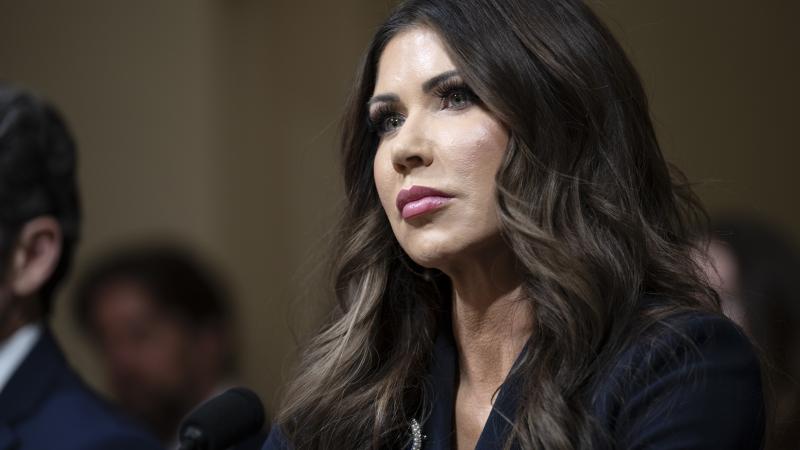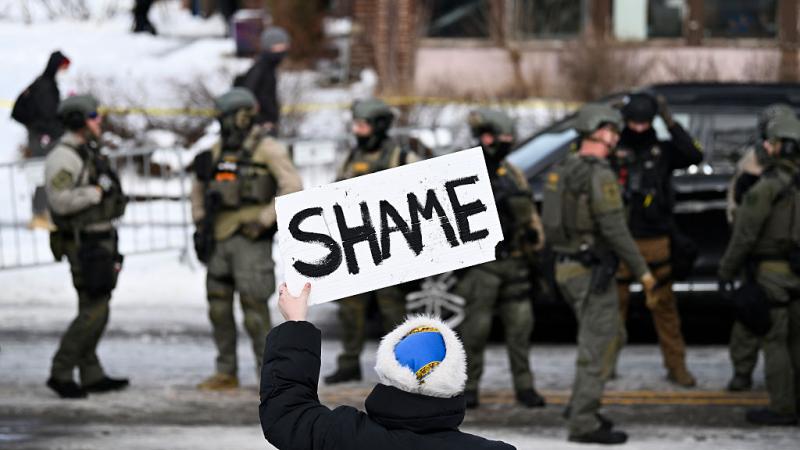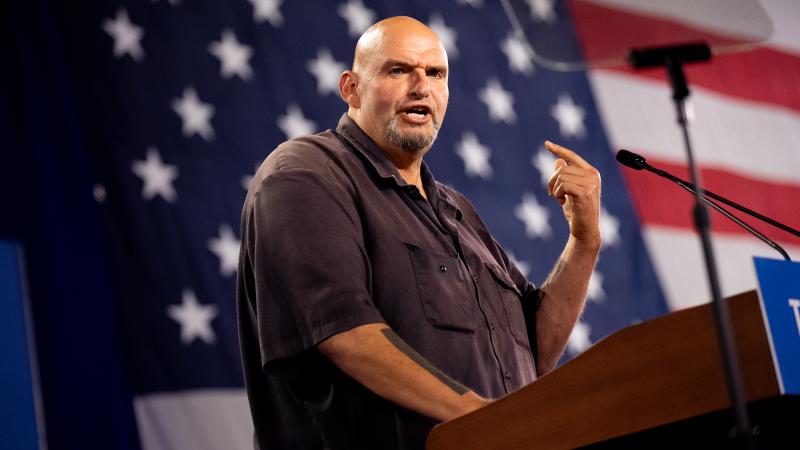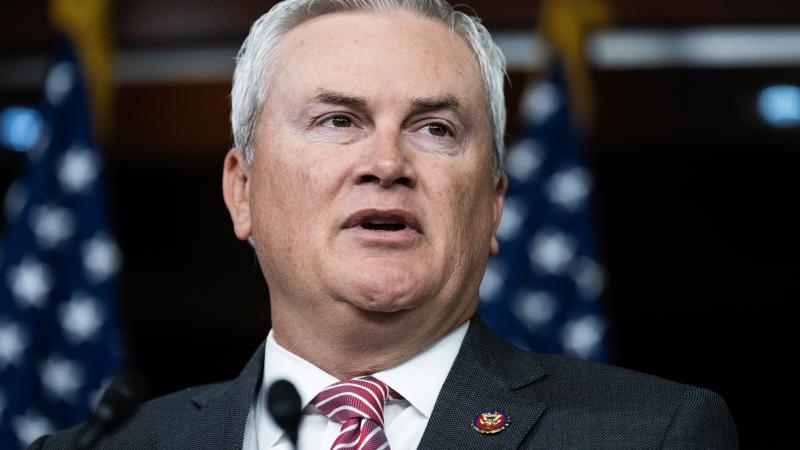Gain-of-function mystery: Congress probes how feds reviewed dangerous research before pandemic
House Oversight wants to know how "potential pandemic pathogen" committee reviewed Wuhan research, if at all. Research kept going during gain-of-function "pause."
Congressional Republicans and scientists are probing what role, if any, a U.S. government committee played in approving taxpayer funding for arguable gain-of-function (GoF) research that preceded the COVID-19 pandemic and the review process before the committee's creation.
The House Oversight Committee and its coronavirus subcommittee asked Secretary of Health and Human Services Xavier Becerra for "all documents and communications between and among" HHS, the National Institutes of Health and National Institute of Allergy and Infectious Diseases concerning a grant to the EcoHealth Alliance, a funding conduit to the Wuhan Institute of Virology (WIV).
The panels also sought those materials on "any related review by the Potential Pandemic Pathogen Care and Oversight Framework (P3CO) review board" and "transcribed interviews" with 29 public health and science officials spanning HHS components, among a laundry list of requests in the Feb. 13 letter.
HHS should additionally turn over materials "regarding the formulation, creation, and publication" of two documents: the Oct. 17, 2014 "deliberative process and research funding pause" on select GoF viral research and Dec. 19, 2017 framework for guiding funding decisions on proposed research involving "enhanced" P3s.
The subject has taken on renewed relevance since a second Department of Energy lab reiterated the first's 2020 conclusion that SARS-CoV-2 most likely leaked from a Chinese lab, which has also been the FBI's assessment "for quite some time," Director Christopher Wray said this week.
The Government Accountability Office also issued a report last month calling on HHS to develop a standard in the 2017 framework to help funding agencies determine what research is "reasonably anticipated" to involve enhanced P3 and thus must be referred to HHS for further review. The report prompted Sen. Roger Marshall (R-Kan.) to reintroduce a moratorium on GoF research funding.
NIH officials told GAO the EcoHealth research on bat coronaviruses wasn't covered by the framework because there was no evidence they infected humans and the experiments "were not anticipated to increase the virulence or transmissibility of these viruses in humans."
GAO did not consult EcoHealth on NIH claims that it "did not adequately monitor the activities of its subawardees," the nonprofit said in response to the report. EcoHealth previously shared the record of its 2018 submission to NIH disclosing that WIV accidentally enhanced a bat coronavirus, contradicting an official's claim to Congress that EcoHealth hid the accident for years.
Yale University epidemiologist Harvey Risch pointed Just the News to a mystery about NIH-funded research on bat coronaviruses by University of North Carolina researchers that collaborated with WIV: how the research published in late 2015 and early 2016 escaped the 2014-2017 funding pause.
The Nature Medicine paper "A SARS-like cluster of circulating bat coronaviruses shows potential for human emergence" discloses funding from NIH and EcoHealth among other sources. "Experiments with the full-length and chimeric SHC014 recombinant viruses were initiated and performed before the GOF research funding pause and have since been reviewed and approved for continued study by the NIH," according to the paper.
The Proceedings of the National Academy of Sciences paper "SARS-like WIV1-CoV poised for human emergence" only mentions federal funding, not EcoHealth. Noting the research was initiated before the pause, it says "Continuation of these studies was requested, and this has been approved by the NIH."
The P3CO committee didn't exist during the funding pause, and a predecessor framework specifically applied to research that could generate "highly pathogenic avian influenza H5N1 viruses" transmissible to mammals.
But a Feb. 1, 2020 email to then-NIAID Director Anthony Fauci, cited by then-House Judiciary Committee ranking member Jim Jordan (R-Ohio) in a 2021 op-ed, suggests the P3 framework may have informally existed during the pause.
Reviewing a paper that said NIH had "reviewed and approved" experiments conducted before the pause, Fauci's deputy Hugh Auchincloss said he was confused because he was "sure that no coronavirus work has gone through the P3 framework."
HHS didn't answer a request for its response to the Feb. 13 letter or what process, if any, NIH used to approve the continuations. NIH didn't answer queries either.
Just the News reached out to NIH program officers who might have played a role in the approvals at the time. Two emails bounced back, and the other addressees didn't respond. Among the latter is Erik Stemmy, previously identified as EcoHealth President Peter Daszak's NIH handler.
The corresponding authors on the papers, Vineet Menachery and Ralph Baric, didn't respond to queries. Both were at UNC at the time, and Baric is known for his direct collaboration with WIV. Menachery, now at the University of Texas Medical Branch, is identified in a recently revealed Slack conversation with another alum of Baric's lab.
The University of Maryland's Matthew Frieman told Menachery about a "long conversation" with Baric about the latter's in-person meeting with Fauci in February 2020, where Baric discussed "the outbreak and chimeras." Frieman said Baric "wasn't amused" when "I joked about his link to WIV."
The Facts Inside Our Reporter's Notebook
Links
- laundry list of requests
- Feb. 13 letter
- Oct. 17, 2014 "deliberative process and research funding pause"
- Dec. 19, 2017
- framework for guiding funding decisions
- second Department of Energy lab reiterated the first's 2020 conclusion
- Director Christopher Wray said this week.
- Government Accountability Office also issued a report
- Sen. Roger Marshall (R-Kansas) to reintroduce a moratorium
- the nonprofit said in response to the report
- 2018 submission to NIH
- official's claim to Congress
- Nature Medicine paper
- Proceedings of the National Academy of Sciences paper
- predecessor framework
- EcoHealth President Peter Daszak's NIH handler
- Baric is known for his direct collaboration with WIV
- recently revealed Slack conversation













